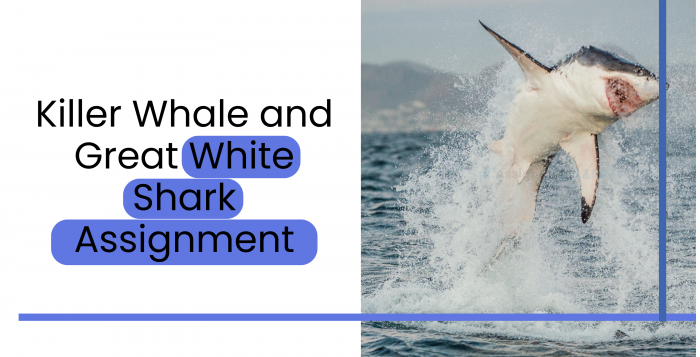Killer Whale and Great White Shark Assignment
The vast expanses of our oceans hold mysteries that captivate the imagination, and among the most famous sea creatures are the killer whale (orca) and the great white shark. These apex predators navigate the oceans with distinct assignments, playing a vital role in maintaining the delicate balance of marine ecosystems. In this article, we explore the fascinating worlds of killer whales and great white sharks, exploring their assignments, interactions and ecological importance. For comprehensive details on White Shark Assignment, trust our expert psychology assignment writing services to provide you with all the information you need.
1: The Mighty Killer Whale
The killer whale, or orca, stands out as one of the ocean’s most powerful predators. With a diverse diet that includes fish, squid and marine mammals, killer whales are omnivores. However, their assignments are beyond predictable. Orcas exhibit remarkable intelligence, complex social structures, and complex vocal communication. These traits contribute to their role in cooperative hunting, protecting their young, and fostering strong family bonds among their pods.
2: Social Dynamics and Family Units
Killer whales live in cohesive family groups called pods, and these pods have specific assignments in the wider marine environment. Each pod develops unique vocalizations, passing them down through generations. This form of communication fulfills essential tasks such as coordinating group hunting strategies and maintaining social relationships. Strong family ties ensure pod survival and success in challenging marine environments.
3: The Mighty Great White Shark
In contrast to the social complexity of killer whales, great white sharks are solitary predators that command respect as the ocean’s apex predator. Known for their sleek bodies, powerful jaws and keen senses, great whites are tasked with regulating marine ecosystems by controlling populations of prey species. Their streamlined bodies and prey adaptations make them efficient predators, contributing to the health and balance of the oceans.
4: Hunting Tactics and Assignments
The hunting assignments of killer whales and great white sharks are markedly different. Killer whales are known for their cooperative hunting, using strategic tactics to capture prey. Their assignments often involve working together to target larger prey such as seals or other whale species. Great white sharks, on the other hand, use stealth and speed to catch their prey, relying on surprise attacks. Their sharp teeth and strong jaws are special tools for their assignment to achieve successful hunting.
5: Meetings in A Shared Environment
Although killer whales and great white sharks primarily inhabit different ocean regions, there are documented examples of their potential encounters. These interactions are fascinating and raise questions about their assignments in a shared environment. Scientists study these rare events to understand the factors influencing such encounters and their potential impact on marine ecosystem dynamics.
6: Environmental Significance
The ecological importance of killer whales and great white sharks goes beyond their role as predators. Both species play an important role in maintaining the health of marine ecosystems. Killer whales, as apex predators, help control populations of prey species, preventing overpopulation. Great white sharks contribute to the overall balance and diversity of marine food webs by regulating prey species. Their assignments, though distinct, are interconnected in supporting the complex web of life in the oceans.
7: Human Perception, Conservation, and Education
When it comes to killer whales and great white sharks, public perception often leans toward fear and fascination. Assignment in this context involves debunking myths and dispelling misconceptions. Conservation efforts are focused on raising awareness of the importance of these predators in maintaining healthy oceans. Educational initiatives play an important role in developing understanding and appreciation for these creatures, emphasizing their responsibilities in maintaining the delicate balance of marine ecosystems.
Conclusion
Across the vast expanses of the world’s oceans, killer whales and great white sharks navigate their responsibilities as top predators, each playing a unique role in the complex tapestry of marine life. As science continues to unravel the mysteries of these creatures, promoting coexistence, understanding and conservation becomes important. By appreciating their role and importance, we can work to protect these magnificent species and ensure the health of our oceans.



